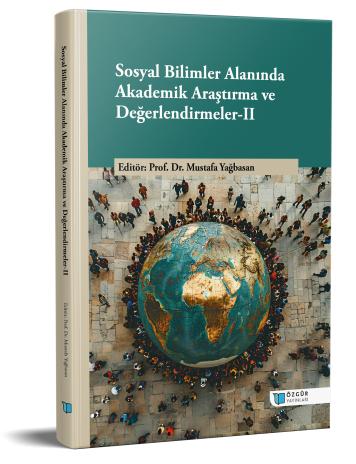
Current Trends in Global Income Distribution Inequality from A Sustainable Development Perspective
Chapter from the book:
Yağbasan,
M.
(ed.)
2024.
Academic Research and Evaluations in the Field of Social Sciences-II.
Synopsis
Global income inequality, a component of Sustainable Development Goal 10, is an indispensable element of a fairer and more peaceful global order, extending beyond purchasing power. Although global income inequality can be defined in various ways depending on different criteria, it generally refers to the concentration of the vast majority of global wealth in the hands of a small number of individuals. Between 1910 and 2000, global income inequality remained relatively stable at very high levels. However, it began to decline as the growth rates of some developing countries, particularly China and India, surpassed those of developed countries. However, not every country and individual benefited equally from this global improvement, and within-country inequalities increased. Income distribution was impacted differently at the individual, national, and regional levels due to regional conflicts, economic crises, pandemics, increased labor mobility, and changes in labor demand driven by technological advancements and digitalization. While the policies each country must implement for a fairer income distribution vary based on their structural characteristics, income inequality is too sensitive an issue to be left to individual efforts alone. Greater global efforts are necessary, particularly to act as a driving force for regions with very low income levels, such as Sub-Saharan Africa, South Asia, and Southeast Asia. Post-distribution interventions aimed at reducing income inequality are essential for vulnerable groups who lack opportunities to increase their income. However, in underdeveloped countries grappling with macroeconomic issues such as high external debt and budget deficits, the ability to provide direct income transfers is limited. Moreover, continuous income transfers may potentially lead to other forms of inequality. Therefore, focusing on pre-distribution interventions that promote equal opportunities is a more sustainable long-term solution. While creating new investment and employment opportunities, ensuring equal participation in the labor market for every individual, regardless of ethnic background or family income level, through equal access to education is more reasonable from a social justice perspective. Providing equal educational opportunities, especially for the children of families who lack the means to invest in human capital, will significantly contribute to reducing income inequality in the long term. This is particularly important in today’s world, where the rapid acquisition of new job skills, driven by technological advancement and digitalization, is increasingly necessary.

